#native Hawaiian birds
Text
Interior Department Announces New Guidance to Honor and Elevate Hawaiian Language

"In commemoration of Mahina ʻŌlelo Hawaiʻi, or Hawaiian Language Month, and in recognition of its unique relationship with the Native Hawaiian Community, the Department of the Interior today announced new guidance on the use of the Hawaiian language.
A comprehensive new Departmental Manual chapter underscores the Department’s commitment to further integrating Indigenous Knowledge and cultural practices into conservation stewardship.
“Prioritizing the preservation of the Hawaiian language and culture and elevating Indigenous Knowledge is central to the Biden-Harris administration's work to meet the unique needs of the Native Hawaiian Community,” said Secretary Deb Haaland. “As we deploy historic resources to Hawaiʻi from President Biden’s Investing in America agenda, the Interior Department is committed to ensuring our internal policies and communications use accurate language and data."
Department bureaus and offices that engage in communication with the Native Hawaiian Community or produce documentation addressing places, resources, actions or interests in Hawaiʻi will use the new guidance on ‘ōlelo Hawaiʻi (Hawaiian language) for various identifications and references, including flora and fauna, cultural sites, geographic place names, and government units within the state. The guidance recognizes the evolving nature of ‘ōlelo Hawaiʻi and acknowledges the absence of a single authoritative source. While the Hawaiian Dictionary (Pukui & Elbert 2003) is designated as the baseline standard for non-geographic words and place names, Department bureaus and offices are encouraged to consult other standard works, as well as the Board on Geographic Names database.
Developed collaboratively and informed by ʻōlelo Hawaiʻi practitioners, instructors and advocates, the new guidance emerged from virtual consultation sessions and public comment in 2023 with the Native Hawaiian Community.
The new guidance aligns with the Biden-Harris administration’s commitment to strengthening relationships with the Native Hawaiian Community through efforts such as the Kapapahuliau Climate Resilience Program and Hawaiian Forest Bird Keystone Initiative. During her trip to Hawaiʻi in June, Secretary Haaland emphasized recognizing and including Indigenous Knowledge, promoting co-stewardship, protecting sacred sites, and recommitting to meaningful and robust consultation with the Native Hawaiian Community."
-via US Department of the Interior press release, February 1, 2024
--
Note: I'm an editor so I have no idea whether this comes off like as big a deal as it potentially is. But it is potentially going to establish and massively accelerate the adoption of correctly written Native Hawaiian language, as determined by Native Hawaiians.
Basically US government communications, documentations, and "style guides" (sets of rules to follow about how to write/format/publish something, etc.) can be incredibly influential, especially for topics where there isn't much other official guidance. This rule means that all government documents that mention Hawai'i, places in Hawai'i, Hawaiian plants and animals, etc. will have to be written the way Native Hawaiians say it should be written, and the correct way of writing Hawaiian conveys a lot more information about how the words are pronounced, too, which could spread correct pronunciations more widely.
It also means that, as far as the US government is concerned, this is The Correct Way to Write the Hawaiian Language. Which, as an editor who just read the guidance document, is super important. That's because you need the 'okina (' in words) and kahakō in order to tell apart sizeable sets of different words, because Hawaiian uses so many fewer consonants, they need more of other types of different sounds.
And the US government official policy on how to write Hawaiian is exactly what editors, publishers, newspapers, and magazines are going to look at, sooner or later, because it's what style guides are looking at. Style guides are the official various sets of rules that books/publications follow; they're also incredibly detailed - the one used for almost all book publishing, for example, the Chicago Manual of Style (CMoS), is over a thousand pages long.
One of the things that CMoS does is tell you the basic rules of and what specialist further sources they think you should use for writing different languages. They have a whole chapter dedicated to this. It's not that impressive on non-European languages yet, but we're due for a new edition (the 18th) of CMoS in the next oh two to four years, probably? Actually numbering wise they'd be due for one this year, except presumably they would've announced it by now if that was the case.
I'm expecting one of the biggest revisions to the 18th edition to add much more comprehensive guidance on non-Western languages. Considering how far we've come since 2017, when the last one was released, I'll be judging the shit out of them if they do otherwise. (And CMoS actually keep with the times decently enough.)
Which means, as long as there's at least a year or two for these new rules/spellings/orthographies to establish themselves before the next edition comes out, it's likely that just about every (legit) publisher will start using the new rules/spellings/orthographies.
And of course, it would expand much further from there.
#don't ask me about the magazine and newspaper half of this#bc I do Not know AP style#except the differences I'm annoyed at lol#ap doesn't respect the oxford comma#hawaii#hawaiʻi#language#orthography#linguistics#language stuff#hawaiian#native hawaiian#united states#publishing#book publishing#indigenous#indigineous people#indigenous languages#language revitalization#language resources#editorial
383 notes
·
View notes
Text
In the late 18th century, [...] Lahaina carried such an abundance of water that early explorers reportedly anointed it “Venice of the Pacific”. A glut of natural wetlands nourished breadfruit trees, extensive taro terraces and fishponds that sustained wildlife and generations of Native Hawaiian families.
But more than a century and a half of plantation agriculture, driven by American and European colonists, have depleted Lahaina’s streams and turned biodiverse food forests into tinderboxes. Today, Hawaii spends $3bn a year importing up to 90% of its food. This altered ecology, experts say, gave rise to the 8 August blaze that decimated the historic west Maui town and killed more than 111 people.
“The rise of plantation capital spawned the drying of the west side of Maui,” said Kamana Beamer, a historian and a former member of the Hawaii commission on water resource management [...].
---
[S]ugar and pineapple white magnates began arriving on the islands in the early 1800s. For much of the next two centuries, Maui-based plantation owners like Alexander & Baldwin and Maui Land & Pineapple Company reaped enormous fortunes, uprooting native trees and extracting billions of gallons of water from streams to grow their thirsty crops. (Annual sugar cane production averaged 1m tons until the mid-1980s; a pound of sugar requires 2,000lb of freshwater to produce.)
Invasive plants that were introduced as livestock forage, like guinea grass, now cover a quarter of Hawaii’s surface area. The extensive use of pesticides on Maui’s pineapple fields poisoned nearby water wells. The dawn of large-scale agriculture dramatically changed land practices in Maui, where natural resources no longer served as a mode of food production or a habitat for birds but a means of generating fast cash, said Lucienne de Naie, an east Maui historian [...].
“The land was turned from this fertile plain – with these big healthy trees, wetland taros and dryland crops like banana and breadfruit – to a mass of monoculture: to rows and rows of sugar cane, and rows and rows of pineapple,” she said.
---
The Great Māhele of 1848, a ground-breaking law that legitimized private land ownership, laid the ground for big developers to hoard water for profit, said Jonathan Likeke Scheuer, a water policy consultant and co-author of the book Water and Power in West Maui. [...] [T]he creation of private property allowed agricultural corporations to wield “political and ultimately oligarchic power” over elected officials. In 1893, a group of sugar magnates and capitalists overthrew the Hawaiian Kingdom’s Queen Liliuokalani, paving the way for the US to annex Hawaii five years later. Sanford Ballard Dole, a cousin of Dole Plantation’s founder, served as the first governor of Hawaii.
When the last of the sugar companies closed in 2016 [...], Scheuer said, the farms were purchased by large investors for real estate speculation and left fallow, overrun with invasive grasses that became fuel for brush fires. Developers [...] took control of the plantations’ century-old irrigation ditches and diverted water to service its luxury subdivisions. In doing so, it left scraps for Indigenous families who lived downstream. [...] [O]n Maui, 16 of the top 20 water users are resorts, time-shares and short-term condominium rentals equipped with emerald golf courses and glittering pools [...].
---
Text by: Claire Wang. "How 19th-century pineapple plantations turned Maui into a tinderbox". The Guardian. 27 August 2023. [Bold emphasis and some paragraph breaks/contractions added by me.]
270 notes
·
View notes
Text
My trip to Kaua'i, Hawai'i

Yellow Hibiscus: The state flower of Hawai'i. Called the “pua mao hau hele” or “Ma’o hau hele” in the Hawaiian Language (ʻŌlelo).
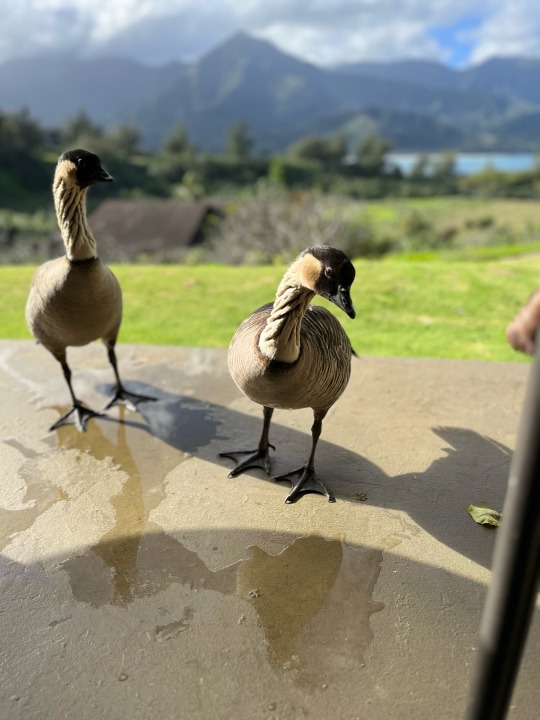
Nēnē (Hawaiian Goose): The rarest waterfowl in the world. Nearly brought to extinction in 1990 with 50 wild individuals. Captive-breeding programs and reintroduction efforts have given the native nēnē a chance with now over 3,862 birds statewide. I was lucky enough to see wild nēnē goslings. Very special.
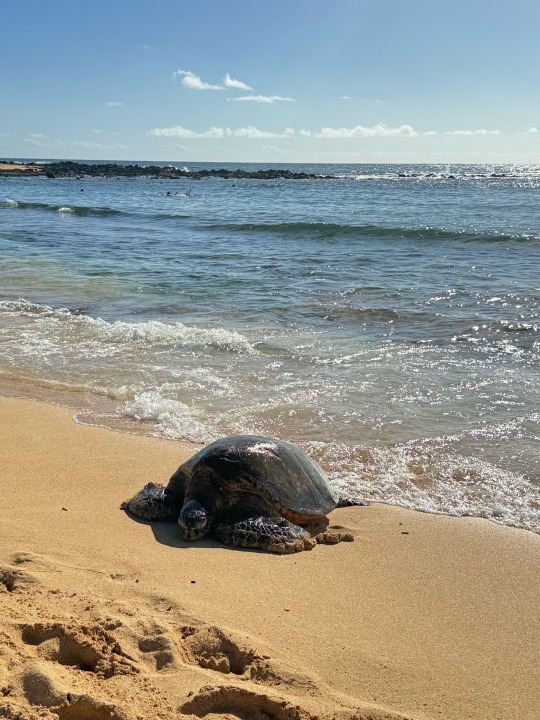
Honu (Green Sea Turtle): An endangered species most commonly found near the Hawaiian Island Chain. Typically reaching sexual maturity around 20 years of age, Green sea turtles nest on the same beach where they hatched. This is a photo I took of a female rising up from the shore to lay her eggs.
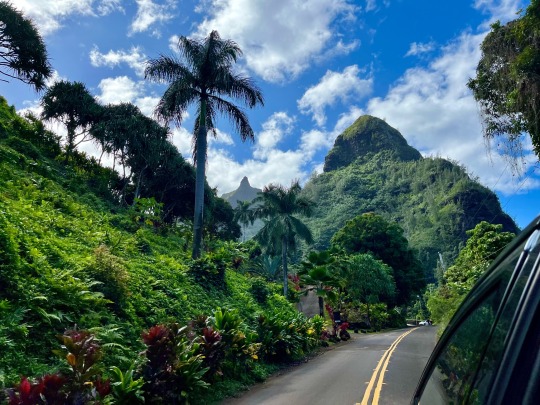
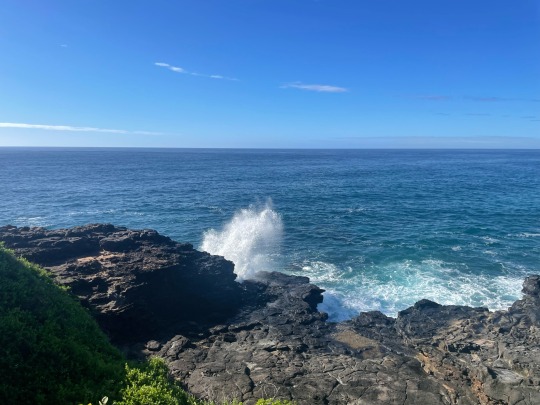
Landscape photos I took on my trip in Kaua'i.
Kaua'i is one of many islands comprising the Hawaiian Volcanic Island Archipelago. I bought a Kaua'i Geologic History Book to learn more about the island and I am very excited to read it.
#i didn't say much about the human history and culture. but I loved learning about the native Hawaiian culture and way of life too#it is very important to me as an environmentalist that I understand and am aware of peoples connection to their culture and tradition#especially regarding the land. nature itself. and history.#Anyways. This trip truly reinvigorated my love and compassion for environ. Geoscience and I feel like a new person going into the new year#this is like 2/10ths of all the photos I actually took. So many beautiful sights#happy new year#bread#art#my photos#photography#photos#kauai#kauaihawaii#hawaii#hawaiʻi#nene goose#yellow hibiscus#honu#green sea turtle#mountains#wildlife#wildlife photography
72 notes
·
View notes
Text

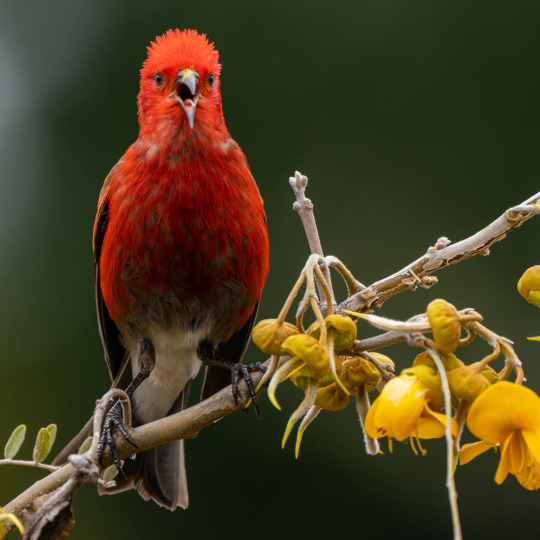
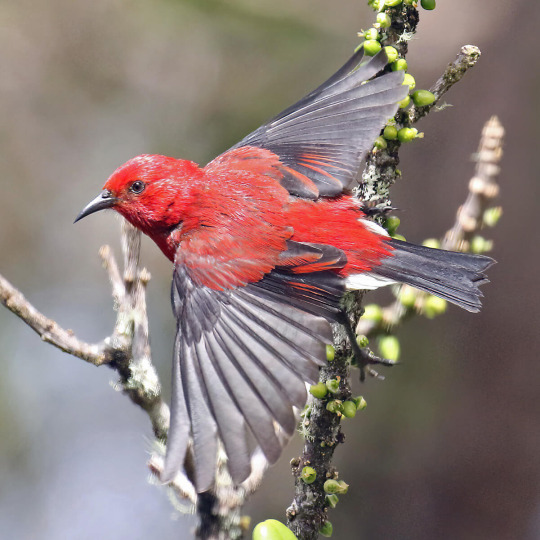

‘Apapane (Himatione sanguinea)
The bright crimson ‘Apapane is part of a group of native Hawaiian birds, reminiscent of – but even more diverse than – the famed Galápagos finches. Known as the Hawaiian honeycreepers, these birds evolved into a varied group of dozens of species that originated from a few wayward ancestors. ‘Apapane feathers, along with those of other native birds, were prized by Native Hawaiians, who used them to adorn the capes, helmets, and feather leis of Hawaiian nobility. The bird's scientific name refers to a “blood-colored cloak.”
There were once more than 50 honeycreeper species found only in the Hawaiian Islands, but today just 17 remain, including the ‘I‘iwi and Kiwikiu, or Maui Parrotbill. The ‘Apapane is the most plentiful.
67 notes
·
View notes
Text

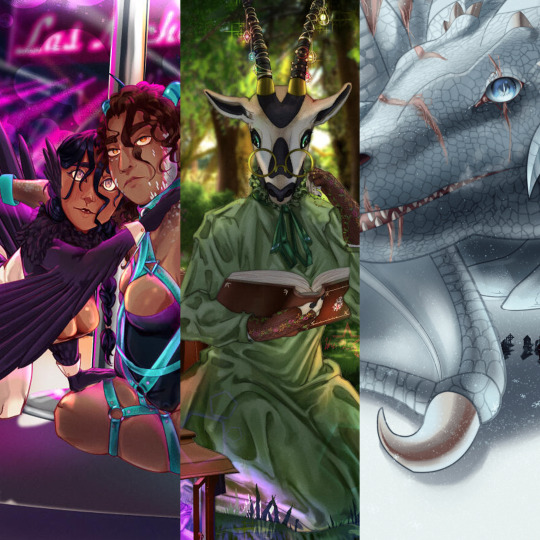



hot and spicy 2023 commissions post! I'm finally caught up to my backlog and updated my TOS and portfolio, so I can open my queue again!
Hello, I'm your local enby, Native Hawaiian artist and I'm looking for work to help pay bills and living expenses! I've got two birds, a dog, and two cats; I like to draw shiny objects and with lots of saturation, and I specialize in Original Characters! If you're looking for someone to commission for personal work, consider me and check out my portfolio!
Reblogs appreciated for circulation!
Check out the links below for more information!
🎨 PORTFOLIO + TOS
📝 COMMISSION FORM
☕ KO-FI
🧡 PATREON
📗 WEBCOMIC ( The Illustrious Dragons Guild, on hiatus )
WILL NOT DO
- Sexual Nudity or Content
- Fetishes
- Sexist, racist, or otherwise hateful work targeting a specific group
- Complex, full-body mechas
- Heavy style deviation, such as hyper-realism
#pinned post#commissions#commissions open#artists on tumblr#queer artist#art for sale#illustrations#dnd#digital art#commission art#character reference#furry#also i AM gonna blaze this post bc my friend sent me $10 to try it.#so we are voyaging into the ad system boys lets see how it goes.#itll either hit or miss i am prepared to accept both options
71 notes
·
View notes
Text

The ʻAkikiki, or Kauaʻi creeper (Oreomystis bairdi) in Kauaʻi, Hawaiʻi.
Only five of the native Hawaiian honeycreeper species, ʻakikiki, are left in the wild after a decades-long population decline. The Kauaʻi Forest Bird Recovery Project were unable to bring the ʻakikiki into captivity without risking death, leaving their chances for survival slim. The ʻakikiki's situation seems most dire of all Hawaiʻi's forest birds, but it is not alone in its existential crisis. Three other Hawaiian honeycreeper species are in danger of extinction in as little as one to two years, with eight other species at risk of extinction in the near future.
Southern house mosquitoes, carrying avian malaria, pose by far the greatest threat to these birds. Because the disease only reached the island within the last century, evolution has provided Hawaiʻi's honeycreepers with little to no immunity against it, resulting in devastating mortality rates when infected. And while the forest birds have moved to higher elevations where it's too cold for the mosquitoes to survive, rising air temperatures have allowed mosquitoes to march farther up, shrinking what little safe habitat is left.
21 notes
·
View notes
Text
Hawaiian Crow / 'Alalā — Corvus Hawaiiensis
For context i started this because i came across a post on my "For You" tab on my main ((Sharkthe-cat)) awhile back talking about an endangered lynx, and i think it said something about it being an animal of the day. If i find it, i'll link it here. But i loved that idea so i figured i'd do that myself, but with endangered organisms and languages, sort of as an outlet for my passion for ((endangered)) languages and my many researching sessions of endangered animals as a kid.
This will also likely take inspiration form the channel imshawn getoffmylawn, please check out his channel, it has lots of really cool videos on obscure and endangered languages, so you may find it of interest if you're a language nerd like me.
My main sources will be Wikipedia and the Ethnologue ((for languages from the Americas and the Pacific as i only have that version at the moment)), and i will attempt at posting once per day, alternating between both organisms and languages.
I always appreciate corrections, please let me know if i have gotten a fact wrong, if you have any other feedback, or literally have anything to say i'd love to know your thoughts on this :D
————————————————————————
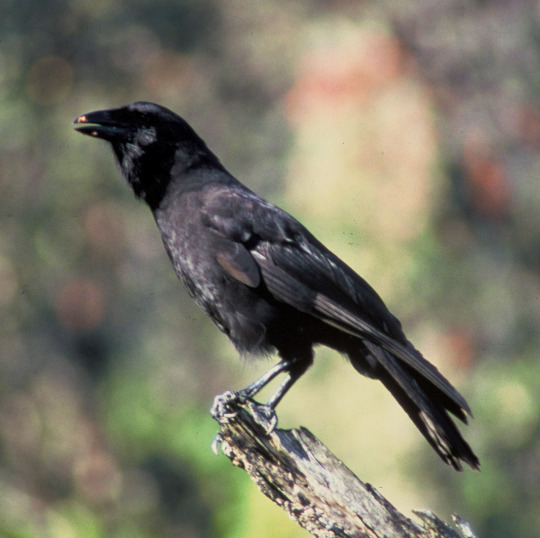
IUCN 3.1 status — EW (Extinct in the wild)
NatureServe status — GH (Possibly extinct)
Population: 120 (all in breeding programs)
Distribution: Hawai'i Island, Hawai'i, USA
"Family Tree:"
Family - Corvidae
Subgenus - Corvinae
Genus - Corvus
Etymology:
'Alalā is the Hawaiian word for to cry, bleat, squeal, bawl, etc., and the crow itself was given that name for its distinctive call.
Programs: Keahou and Maui Bird Conservation Centres
As with many other crows, Hawaiian crows are known for their intelligence and socialness. Captive individuals use sticks as tools to extract food from holes drilled in logs, and juveniles are known to use them without training or learning from others. They are regarded as 'aumākua, or family guardians, by some native Hawaiians.
The 'alalā are the most endangered species in the family corvidae and the only corvid left in Hawai'i, and they have been extinct in the wild since 2002. In the wild, their main predator was the Hawaiian hawk (which itself is near threatened). Most crows adapt very well to humans presence, but the 'alalā population has gone down drastically in their presence. Their population decreased due to various reasons, including deforestation (as with many other species), the introduction of non-native species (cats, dogs, mongooses, rats), and in particular, avian malaria, caused by deforestation allowing the rise of invasive plants and mosquitoes. They are considered to be an indicator species by scientists (a species that is used by scientists to represent the state of the area based on how well it's doing in its environment), and the absence of them has caused many plant species that rely on them to suffer as a result.
Bibliography:
https://en.wikipedia.org/wiki/Hawaiian_crow
https://volcanoheritagecottages.com/2021/11/13/the-recovery-story-of-hawaiis-revered-alala/
https://animals.sandiegozoo.org/animals/alala-hawaiian-crow
16 notes
·
View notes
Text
Round 1, Poll 35
Kaua'i Mole Duck vs Great Argus

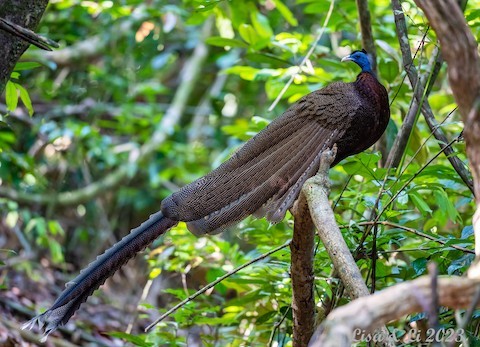
sources under cut
Kaua'i Mole Duck Propaganda
eBird Sightings - 0
IUCN Status - Extinct
Location: Hawai'i: Island of Kaua'i
"probably flightless and blind and navigated using a sensitive platypus-like bill, like a weirder version of a kiwi. IMO it's one of the craziest native Hawaiian birds and that's saying something"
Great Argus Propaganda
eBird Sightings - 3,857
IUCN Status - Vulnerable
Location: Southeast Asia - Peninsular Malaysia, Sumatra, Kalimantan, Singapore, Brunei
"It has arguably the craziest display of any galliforme/gamefowl and I feel like it is very rarely discussed" (video has no sound)
Image Sources: Duck (Instagram: eraserdustart); Argus (Lisa & Li Li)
Other Data: Birds of the World
#hipster bird main bracket#bracket: true a#poll#polls#round 1#kauai mole duck#kaua'i mole duck#great argus
17 notes
·
View notes
Text
night, fruit bats! - grey-headed flying fox
requested by @alpaca-dave


grey-headed flying foxes have appeared in two episodes so far: season one's "fruitbat" and briefly in season three's "bedroom". bluey loves fruit bats, and so do i! australia is home to over 75 species of bat, but the grey-headed flying fox is the biggest. flying foxes--also called fruit bats--are megabats, the larger of the two classifications of bat. while microbats primarily eat insects, megabats love to chow down on all sorts of fruit and nectar. since we're going to be talking about fruit trees as well, this post will be under a read more.

these bats are highly social, forming groups called "camps" that can contain tens of thousands of individuals. there are three other species of flying fox found in the country (black, little red, and spectacled) and all are effective pollinators, promoting forest health as they disperse seeds and pollen. as bingo correctly states in "fruitbat", these critters are primarily nocturnal, like all bat species. they roost during the day and hunt for fruit, pollen, and nectar at night.
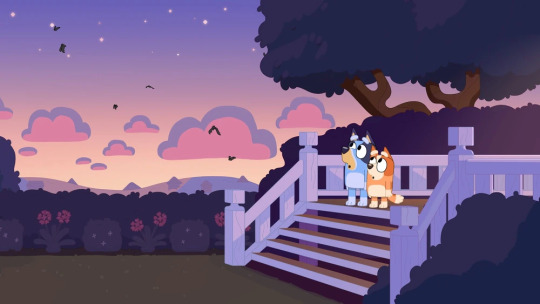
grey-headed flying foxes are partial migrants, and will travel hundreds of kilometers as foraging locations change. the episode gives us a nice montage of dream-bluey and her flying fox friends on a couple different types of fruit tree. lets take a quite detour to learn about some fruit trees.


first up is a nice looking mango tree. this one looks like it could be a bowen variety. they're the most common and one the most tasty kinds grown in australia. so well beloved, in fact, that there's even a 10 meter tall fiberglass one in its namesake town!
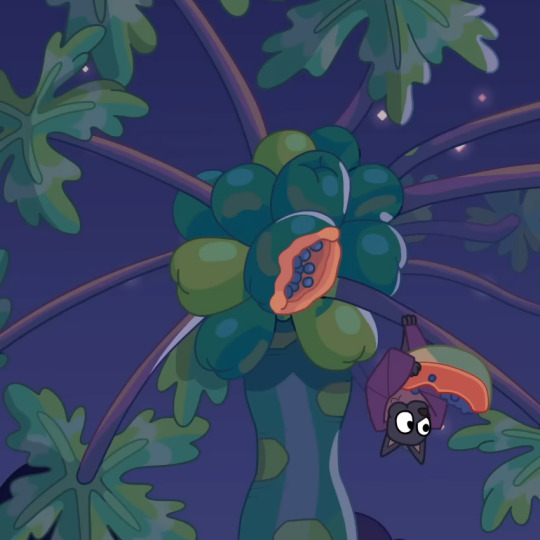

next, a papaya. there are two main varieties, mexican and hawaiian. this one is mexican, the larger of the two, and is a favorite of fruit-eaters like birds and megabats. despite their prevalence, papaya plants are not native to australia.
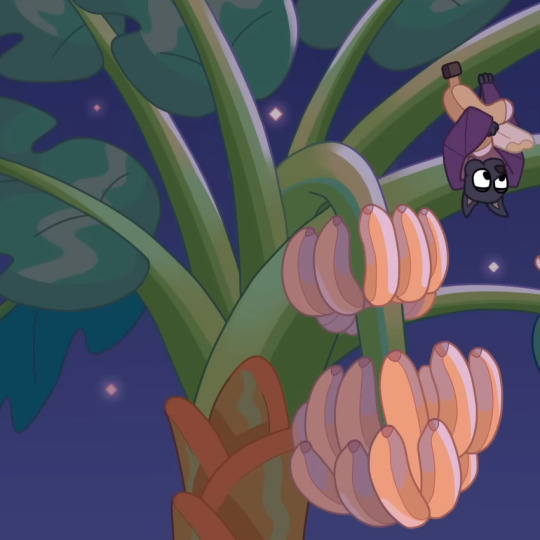

this is a cavendish banana, by far the most popular banana in the entire world--it makes up 99 percent of all bananas grown. the primary variety used to be "big mike", but a devastating fungus-borne disease wiped them out in the 1950s. its likely that the same could happen to the cavendish if we're not careful.

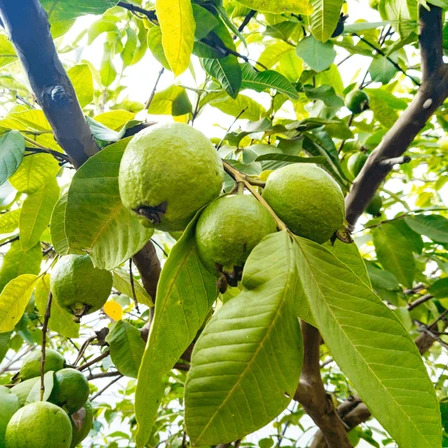
last but not least, a guava tree. this one is a recognizable common guava, which are native to south and central america and the caribbean. they've been introduced worldwide, and can quickly take over. interesting to note that australia actually does have a native guava species, but a highly infectious invasive plant disease called myrtle rust is driving them to extinction.

such a fun assortment of fruits for a cool critter! these big bats are often considered a nuisance in cities, but they are vital to maintaining healthy forests. one grey-headed flying fox can spread as many as 60,000 seeds in a single night! they're particularly vulnerable to rising temperatures, and experts have noted a considerable decline in their numbers in the last century. the grey-headed flying fox is a beautiful and unique member of the australian ecosystem, and it's high time we appreciated them for the wonders they are. so the next time you say good night, be sure to thank these fascinating animals for all the work they do while you're asleep.
#bluey#bluey in the bush#mammals#trees#grey headed flying fox#mango#papaya#banana#guava#hope u didnt mind the fruit tree break i thought it might b fun
4 notes
·
View notes
Text
goofy hawaiian bird facts i learned from this book i read on a plane
* woodpeckers hate flying over water, so no woodpecker species has ever made it to hawaii. HOWEVER, nature abhors a vacuum, and that whole “gettin lil grubs n such outta tree bark” niche was ripe for the taking... so the woodpecker niche was filled by this guy:
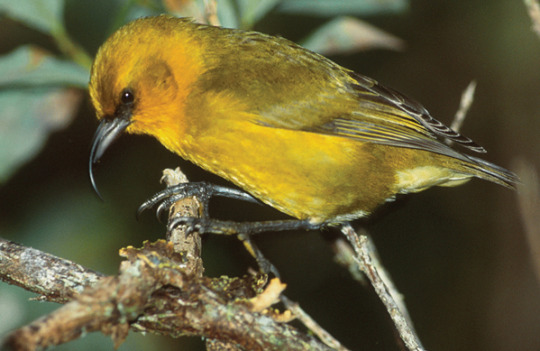
“what,” you may ask, “the heck.”
the ʻakiapōlāʻau is a member of the Hawaiian honeycreeper family, which is mostly evolved to drink nectar from flowers. but this dude figured out he could just... open his beak real wide... peck with only with the stumpy lower “jaw” of his beak... and get some extra food that way. thus he is a “wood” “pecker” lmao.
here’s a video of one pecking. cw goofy bird bein GOOFY AS HECK
* speaking of said honeycreeper family: the reason for their goofy curved beaks is not just specialized-adaptations-to-take-advantage-of-different-food-sources (as is classically the case in eg Darwin’s finches), but coevolution alongside Hawaii’s flowering plants! see, Hawaii doesn’t have any native bees or mosquitos, so the flowers desperately needed some sort of pollinators; ergo, they relied on birds bopping their heads in for some nectar and getting some pollen on their foreheads in the process.
it is most advantageous for the flowers if the bird has to work at it / struggle a bit to get the nectar (so that it shakes the flower and gets more pollen on itself in the process), but it is most advantageous for the bird if they have to do zero work. so you get native flowers evolving all kinds of weird, convoluted shapes to make it harder to sip their nectar, and birds evolving ever-curvier ever-goofier beaks to compensate. it’s kinda luck the duck-corkscrew-penis-thing but less uhhh visceral/brutal, lol
* i knew, vaguely, that most of Hawaii’s native avifauna are endangered due to habitat loss and predation from invasive species. what i didn’t realize is what a menace avian malaria is—probably a bigger factor in the population die-off than anything else. there’s huge parts of the islands where aggressive fencing has gotten predation/disruption by invasive species under control, but the birds are still facing massive population die-offs b/c they literally had none of these diseases until humans showed up. (which is more recent than i thought! the polynesians rolling in was only ~1000 years ago, and promptly extinct’d a bunch of the more dodo-like birds the island had at the time, haha.) there’s evidence that some of the honeycreeper species are finally developing resistance, which is great news (the ʻapapane, in particular, seems to have developed a lot of resistance in small population studies, and also its population is increasing & its range is expanding), but the ‘i’iwi still seem to be 100% vulnerable to the illness in small population studies, so. that + climate change (which will make the island warmer, thus extending the range of mosquitos further up into the mountains, which will spread the range of avian malaria even further) makes the prospects for 'i’iwis really grim, alas :(
* i thought most of the invasive bird species on Hawaii were brought over accidentally, like, escaped pets or whatever, but turns out they were mostly deliberately introduced by this one Hawaiian bird club (Hui Manu) during the 1930s onward lol. in particular, there were very few native birds left in the lowlands by then, people think birds are cool, they’re like there are no birds here so what if we bring our own... and now there’s, like, northern cardinals and house finches n shit right here in the middle of the pacific. rip
* Hawaii’s state bird, the Hawaiian goose (aka the nene), is actually a funny story amusing/uplifting conservation story. by the 1980s, they were basically extinct in the wild, and it’s super-embarrassing if your state bird goes extinct, so they were trying to reintroduce some captive flocks into the wild, right? they did some early reintroduction programs on Oahu and Maui, but they went poorly, in part because those islands have a serious mongoose problem (thanks to sugarcane farmers bringing them in to “help” “control” the rat population in the 1800s).
there was Kauai sitting right there, however, which had a mongoose population of 0. perfect! however, they hesitated to reintroduce the goose there, because they weren’t sure if the goose was actually native to that island, and by that time they’d finally become a lil gun-shy about reintroducing species willy-nilly based on vibes
however, the choice was taken out of their hands when a massive hurricane blew through in 1982, which blasted apart the enclosures for a captive flock on Kauai, which sent them scattering all over the island.
this flock positively thrived on Kauai, and happily, later fossil evidence confirmed that nene had in fact historically existed on the island, so it was indeed a reintroduction, and they’ve now been reestablished on Oahu and Maui as well. gogo nenes~
* apparently bristle-thighed curlews do the eclipse plumage thing that ducks do (where they molt all their feathers at once and are thus flightless for a period of time), and that’s part of why they’re hella endangered right now. they relied on those lil tiny pacific islands having zero predators, alas
* “the graceful and handsome Hawaiian Stilt, a relative of the Black-necked Stilt of North America, whose annoying hipping calls caused one spart-aleck to call it the ‘pond poodle’” lmao
* i knew about white terns, the goofy little cuties famed in bird memes because they just lay their eggs on tree branches with zero nest material or any other protection for the things. but did you know they specifically like to nest in... urban Honolulu? apparently the easiest way to find them is just go to their version of Central Park and look up to find the lil youngster yapping away from a big ol branch. awesome
anyway! hope you enjoyed this edition of Bird Facts TM
48 notes
·
View notes
Text
Hello everyone! Damn, the paddlefish article has really brought a lot of new folks to this blog! Welcome everyone, and thank you so much for joining this lovely little project of mine--I am so grateful that so many people have taken an interest in my work and in the species I want to help protect.
Since there are so many new folks here, I wanted to give a brief rundown on the articles I've written so far. In the last year and a half of this project, I've been able to write about seventeen awesome and unique species that are in need of further conservation attention. Here are some links to learn more about them:
Olm (Proteus anguinus): the OG and mascot for the site, this eyeless salamander manages to survive in its pitch-dark cave biome through incredible sensory abilities and supernatural patience.
Indian Purple Frog (Nasikabatrachus sahyadrensis): this comically-ugly creature is also incredibly mysterious, spending its entire life underground and only emerging for a single day each year.
Pygmy Hippo (Choeropsis liberiensis): this secretive, pig-sized mammal is the only surviving relative of the mighty river hippo, but lives a completely different lifestyle from its much more famous cousin.
Scaly-Foot Snail (Chrysomallon squamiferum): one of the weirdest animals on the planet, this snail grows a shell reinforced with iron and lives around hydrothermal vents deep beneath the surface of the Indian ocean.
Kaua'i Cave Wolf Spider (Adelocosa anops): this blind cave spider is one of the rarest arthropods on Earth, and lives in tunnels carved by lava flows beneath the surface of the Hawaiian Island of Kaua'i.
Shoebill (Balaeniceps rex): this huge African water bird uses its tremendous beak like a guillotine to smash and decapitate its prey.
Largetooth Sawfish (Pristis pristis): this relative of sharks and rays has a tremendous nose lined with teeth which it uses to dig up and swipe at prey, but that's not the only thing its nose is good for.
Takin (Budorcas taxicolor): this large goat relative is quite possibly the most mysterious large land mammal on Earth, as it lives deep in the forested mountains of China, India, and Bhutan.
Zacatuche (Romerolagus diazi): also known as the "volcano rabbit", this adorable little fellow is an excellent gateway into understanding the benefits of grasslands to ecosystems and human settlements alike. Done in collaboration with Mexico'a CONANP.
(tambien en español)
Secretarybird (Sagittarius serpentarius): this badass raptor stalks the African savannah, using its powerful legs to deliver one of the fastest and most accurate kicks in the animal kingdom (and yes it's also the bird from Aggretsuko).
Manchineel (Hippomane mancinella): the first plant written about on Consider Nature (though certainly not the last), the manchineel is quite possibly the most toxic tree in the world, with every part of its anatomy steeped with a variety of noxious substances.
Gharial (Gavialis gangeticus): this crocodilian is a fish specialist, using its long, slender snout like a rapier to cut through the water and snag its prey.
Vaquita (Phocoena sinus): the most-endangered mammal on the face of the Earth, the Vaquita is a tiny porpoise that has gotten caught up in the black market trade of an extremely valuable fish bladder. Done in collaboration with Sea Shepherd International.
Pekapeka (Mystacina tuberculata): this tiny bat species is one of only 2 mammals native to New Zealand and spends more time on the ground than any other bat species in the world, despite being able to fly.
Angular Roughshark (Oxynotus centrina): this shark is native to the coasts of Western Europe and Africa, where it lives over a thousand feet beneath the waves and is rarely seen by people.
Marine Iguana (Amblyrhynchus cristatus): these iguanas are the only seafaring lizards in the world, and have developed a variety of remarkable adaptations to survive the extreme conditions of the Galapagos Islands.
And as always, if you have any suggestions, questions, or just want to say hi, you can DM me here or email me at [email protected]. Welcome, and thank you for your support.
4 notes
·
View notes
Text
Okay I THINK I got what I want Angie's new backstory to be. I unfortunately don't have any way to verify if the information is correct, as researching is really not my forte, and there aren't any like, guides I can find about.
This ofc doesn't contain any spoilers for Twins AU, so if any of my followers happen to know more about Native Hawaiian culture and religion, feel free to correct me!
Under the cut it goes!
Final notes for Angie's backstory:
When Angie was a baby, she got very sick and have an extremely high fever. Her mother then named her "Pupuka" (Means literally "Ugly") as a superstitious way to ward off the illness. Angie claims that this event is when the Atua first made contact with her and saved her, and mentions that while her name was changed back to Angie, that the Atua still call her Pupuka. Angie refers to her mother as "mama" since her mother died when she was young, but she hides how much she misses her by saying that she does not fear death as the Atua promised her and her family happiness after death.
Angie references the climate change in Hawaii being "the Atuas' wrath" or "the wrath of the atua" for littering the state with unexploded bombs/missiles, and the US military using certain parts of the islands for "Target practice" as well as tourists producing a lot of plastic waste.
Angie greatly dislikes the police, as they tend to disrupt her attempts to gather her followers and partake in loud feasts and celebrations, including for her birthday. She's been arrested multiple times for this.
Angie claims she is often "possessed" by the Atua, namely: Rongo-mā-Tāne – god of agriculture and peace, Tāne Mahuta – creator of all living things such as animals, birds and trees, and Tangaroa – god of the sea. She claims all of them are shy and all of them are great at art, and that she is just a vessle for them to express themselves.
EDIT: I forgot to mention the whole name thing--apparently it is tradition that, if a name is considered harmful towards a child, that their name is to be changed--even to a really "ugly" name that often makes westerners extremely uncomfortable.
Also Angie is probably super chill about queer people fun fact.
2 notes
·
View notes
Text
In the United States 🇺🇸 around twenty five states are of Native American origin.
Alabama- named for the Alabama or Alibamu Muskogean tribe means “clearer’s of the thickets.
Alaska- named for the Aleut word Alaxsxqua means mainland.
Arizona- named for an O’odham word Alisonak meaning “small spring”.
Arkansas- origin uncertain Alkansia south west people Alkansas.
Connecticut-named after a Mohican word Quonehtacut , means place of long tribal river.”
Dakota North/South a Dakota word meaning Friends or Allies.
Hawaii- is an original Hawaiian word meaning “homeland”.
Illinois-named after the Illinois word Illniwek meaning men.
Iowa-named for the Ioway Tribe whose name means “gray snow”.
Kansas- named for the Kansa Tribe whose name means “South Wind People “.
Idaho-not known origin but thought to be a “Gem of the Mountains “.
Indiana-presumably named for the people living along the river or natives living near western Pennsylvania.
Kentucky- origins unclear it may have been Iroquoian name Kentake” meaning the meadow land of tomorrow.
Massachusetts- named for the Algonquin word Massadchu-es et means “ great hill-small place”.
Michigan- from Chippewa word Michigama “ meaning large lake “.
Minnesota- named for the Dakota Indian word Minisota meaning “white water or mist with smoke “.
Mississippi-named for the river by the Choctaw Tribe meaning “Great Waters or Father of Waters”.
Missouri-named for the Missouri Tribe means “Dugout Canoes”.
Oklahoma- Choctaw Nation means “Land of the Red Men”.
Tennessee- Cherokee origin from the tribe living on the Tanassee or Tennese River means “Bend in the River”.
Utah- named for the Ute Tribe that lived there
Wisconsin- named for its principal river means “Wild Rushing Channel” also refers to holes in its banks for nesting birds.
Wyoming- from the Delaware or Leni-Lanape word mouth-wari-wama means “Mountains and Valleys alternated”.
7 notes
·
View notes
Text
Exploring the World
As a teenager, I embarked on a journey to Hawaii that would forever change my perspective on nature's beauty and diversity. The lush landscapes, pristine beaches, and vibrant marine life captivated my senses, leaving an indelible mark on my soul.
My first glimpse of Hawaii's breathtaking scenery was from the plane window as we descended into Honolulu. The emerald green mountains, fringed by cascading waterfalls and enveloped in mist, seemed like something out of a dream. Stepping onto the tarmac, I felt the warm embrace of the tropical air, infused with the scent of flowers and saltwater.
One of the highlights of my trip was exploring the Hanauma Bay Nature Preserve on Oahu. Snorkeling in the crystal-clear waters, I was greeted by a kaleidoscope of colorful fish darting among coral reefs. It was like entering a bustling underwater metropolis, where every inhabitant played a vital role in the ecosystem's harmony.
Venturing inland, I hiked through lush rainforests, where towering banyan trees formed natural cathedrals, their aerial roots reaching down like ancient sentinels. I marveled at the symphony of bird calls and the iridescent plumage of native species flitting among the branches.
On the island of Maui, I witnessed the raw power of nature at Haleakalā National Park. Standing atop the volcanic summit at sunrise, I watched as the first rays of light illuminated the otherworldly landscape below. The surreal beauty of the barren crater, etched with colorful striations, left me awestruck.
But perhaps the most profound experience was encountering Hawaii's indigenous culture and its deep connection to the land. Learning about the ancient Hawaiian concept of aloha ‘āina (love for the land), I gained a newfound appreciation for the importance of environmental stewardship and conservation.
As I bid farewell to Hawaii, I carried with me memories of its untamed beauty and the sense of wonder it inspired. My teenage journey had been a transformative odyssey through nature's bounty, reminding me of the intricate tapestry of life that exists beyond the confines of everyday existence
2 notes
·
View notes
Text
Dream Realm Info Post
I'll continue adding to and editing this, but for now it's gonna be lazy bios for the main characters
Tag: #dreamrealmstory
Abigail
Nicknames: Abby, Angel (by all)
Guardian Power: Light - Moon
Pronouns: She/her (Cisgender)
Sexuality: Lesbian
Race/Ethnicity: Asian-Caucasian (Japanese-American), Angel
Homeworld: Dream Realm
Birthday: March 4th (Pisces)
Height: 5'6
Appearance: Pale skin, light blonde wavy hair, blue eyes
Main Weapons: Staff, morningstar/flail, shield
Pets: Berry (Black Siberian Cat)
Mount: Buttercup (White Arabian Horse)
Occupation: Student
Sarah
Nicknames: Sprout (by Mia & Dad)
Guardian Power: Plant - Moon
Pronouns: She/her (Cisgender)
Sexuality: Lesbian
Race/Ethnicity: African American, Human
Homeworld: Dream Realm
Birthday: November 25th (Sagittarius)
Height: 5'2
Appearance: Dark brown skin, black coily hair, green eyes
Main Weapons: Staff, dagger, potions belt
Pets: Spark (Brown Australian Shepherd), Sabre (Tortoiseshell Cat), as well as an assortment of birds, amphibians, and reptiles.
Mount: Gauge (Brown Paint Horse)
Occupation: Student, animal caretaker/vet, and mechanic
Leo
Nicknames: N/A
Guardian Power: Time - Moon
Pronouns: He/him (Cisgender)
Sexuality: Bisexual
Race/Ethnicity: Hispanic-Caucasian (Mexican and Scott/Irish), Human
Homeworld: Earth
Birthday: July 30 (Leo) + 6 months in limbo
Height: 5'8
Appearance: Light tan skin, black wavy hair w/ red streak, red eyes
Main Weapons: Sword, fists
Pets: Sandy (Corn Snake Familiar)
Mount: Ghost (Black Sabino American Quarter Horse)
Occupation: Student, coffee shop barista, busboy at his dad's restaurant during the summer
Phoenix
Nicknames: Phoe (by all), Phoebe (by family)
Guardian power: Fire - Moon
Pronouns: She/her (Cisgender)
Sexuality: Straight
Race/Ethnicity: Hispanic-Caucasian (Mexican and Scott/Irish), Human
Homeworld: Earth
Birthday: April 16th (Aries)
Height: 5'10
Appearance: Tan skin, ginger wavy hair w/ bleached streak, amber eyes
Main weapons: Longbow, axe
Pets: Flare (Phoenix Familiar), Redbeard (Bearded Dragon)
Mount: Spitfire (Chestnut Mustang)
Occupation: Student, fast food cook, line cook at her dad's restaurant during the summer
Akane
Nicknames: Red (by Abigail)
Guardian Power: Dark - Sun
Pronouns: She/they (Demigirl)
Sexuality: Aromantic Asexual
Race/Ethnicity: Asian (Japanese), Angel
Homeworld: Dream Realm
Birthday: October 25th (Scorpio)
Height: 5'6
Appearance: Pale skin, black straight hair, purple eyes (used to be red)
Main weapons: Katana, scythe, double daggers, hairpins
Pets: Boo (White Siberian Cat), Lucifer (Black wolf dog)
Mount: Orchid (Black Arabian Horse)
Occupation: Student
Taro
Nicknames: Terra (birthname, used by some family)
Guardian Power: Earth - Sun
Pronouns: He/him (Transgender)
Sexuality: Straight
Race/Ethnicity: Asian-Hispanic, (Filipino and Puerto Rican), Human-Elf-Faun
Homeworld: Dream Realm and Earth
Birthday: May 17th (Taurus)
Height: 5'3
Appearance: Light brown skin, brown curly hair with green ends and bleached sides, hazel eyes
Main weapons: Hammer, fists
Pets: Lucky (Brown Speckled Mutt Service Dog)
Mount: Rocky (Brown Rocky Mountain Horse)
Occupation: Student, many different odd jobs and part timers
Sage
Nicknames: Starchild (Mother)
Guardian Power: Telepathy - Sun
Pronouns: They/them (Non-Binary)
Sexuality: Gay
Race/Ethnicity: Asian (Indian), Vampire-Demon-Aetheran (alien race)
Homeworld: Dream Realm
Birthday: September 22 (Virgo)
Height: 6'0
Appearance: Brown skin, purple curly hair with bleached streak, gold eyes
Main Weapons: Double staffs, double daggers
Pets: Atlas (Raven Familiar) Apollo (Cream Ferret), Athena (Brown Ferret)
Mount: Comet (Black Dappled Andalusian)
Occupation: Student
Maria
Nicknames: Mari (Mom)
Guardian Power: Water - Sun
Pronouns: She/her (Cisgender)
Sexuality: Pansexual
Race/Ethnicity: Asian (Filipino and Native Hawaiian), Merfolk
Homeworld: Dream Realm
Birthday: May 24 (Gemini)
Height: 5'5
Appearance: Tan skin w/ vitiligo spots, blue curly hair w/ blue-green ends and white bangs, blue-green eye and white eye w/ black sclera
Main weapons: Rapier, dagger, revolver
Pets: Crackers (Parrot), Tuna (Grey Tabby), Salmon (Orange Tabby), Cod (Cream Tabby) Mackerel (Siamese Cat)
Mount: Kelpie (Grey Appaloosa)
Occupation: Student, Sailor
Issy
Nicknames: Iss/Izz, Moon (by all)
Guardian Power: Moon
Pronouns: He/they (Demiboy)
Sexuality: Biromantic Asexual
Race/Ethnicity: Caucasian (American)
Homeworld: Earth
Birthday: January 14th (Capricorn)
Height: 5’0
Appearance: Pale skin, dark brown curly hair, hazel eyes
Main weapons: Sword, longbow, double daggers
Pets: Liberty (Doberman), Clover (Tuxedo Cat), Onyx (Black Cat), Holstein (Black and White Cat)
Mount: Lightning (Dark Bay Thoroughbred)
Occupation: Student, Stage tech
Evelyn
Nicknames: Evy (by all)
Guardian Power: Sun
Pronouns: She/her
Sexuality: Unlabeled
Race/Ethnicity: Hispanic-Caucasian (Cuban, Dominican, and American)
Homeworld: Earth
Birthday: August 29th (Virgo)
Height: 5’3
Appearance: Tan skin, brown wavy hair, brown eyes
Main weapons: Sword, shield, staff
Pets: N/A
Mount: Sunburst (Chestnut Thoroughbred)
Occupation: Student
Anxiety
Nicknames: Anx (by all)
Guardian Power: N/A
Pronouns: Any (Genderless)
Sexuality: ???
Race/Ethnicity: Umbrian-Mirrorling (Originally was just an Umbrian)
Homeworld: ???
Birthday: ???
Height: Changes constantly, but usually 5’0
Appearance: White skin, black wavy hair, full white eyes
Main weapons: Sarcasm
Pets: N/A
Occupation: N/A
I said lazy but this took me hours to do 💀
Birthdays and pet names are subject to change cause I don't really like them lmao
2 notes
·
View notes
Text
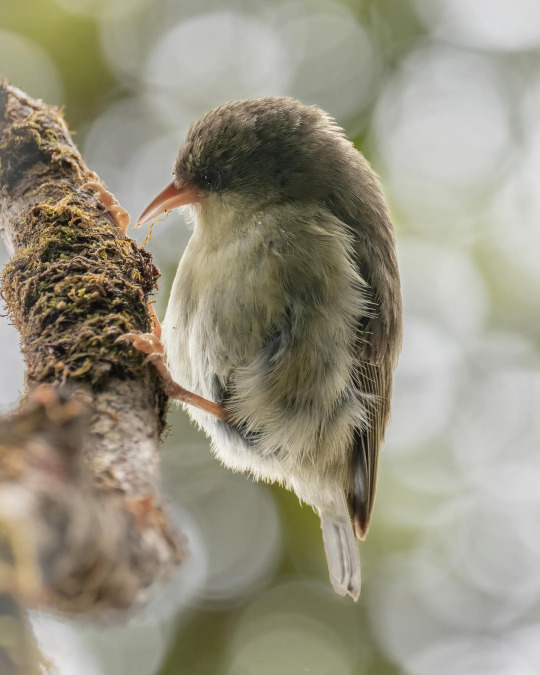
The ʻAkikiki, or Kauaʻi creeper (Oreomystis bairdi) in Kauaʻi, Hawaiʻi.
Only five of the native Hawaiian honeycreeper species, ʻakikiki, are left in the wild after a decades-long population decline. The Kauaʻi Forest Bird Recovery Project were unable to bring the ʻakikiki into captivity without risking death, leaving their chances for survival slim. The ʻakikiki's situation seems most dire of all Hawaiʻi's forest birds, but it is not alone in its existential crisis. Three other Hawaiian honeycreeper species are in danger of extinction in as little as one to two years, with eight other species at risk of extinction in the near future.
Southern house mosquitoes, carrying avian malaria, pose by far the greatest threat to these birds. Because the disease only reached the island within the last century, evolution has provided Hawaiʻi's honeycreepers with little to no immunity against it, resulting in devastating mortality rates when infected. And while the forest birds have moved to higher elevations where it's too cold for the mosquitoes to survive, rising air temperatures have allowed mosquitoes to march farther up, shrinking what little safe habitat is left.
18 notes
·
View notes